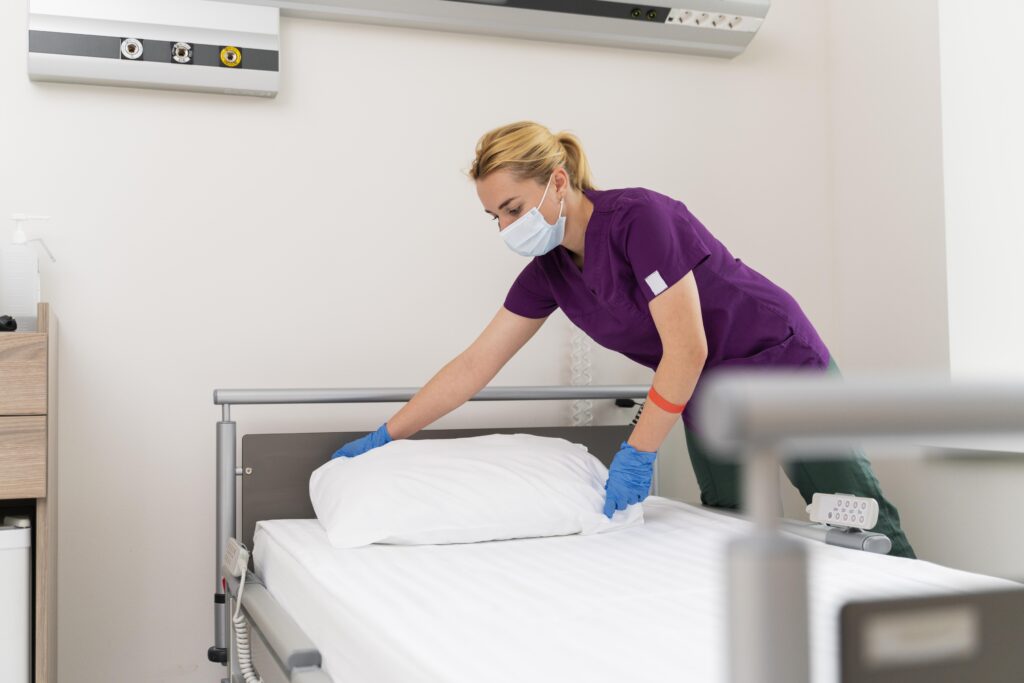Have you ever wondered how hospitals manage to keep their linen and clothes clean and hygienic? How do they deal with the different types of soiled and contaminated fabrics that come from various departments and wards? How do they ensure that the laundry process is efficient, cost-effective and environmentally friendly?
If you are curious about these questions, then you are in for a treat. In this article, we will unveil the art of hospital laundry planning and show you how it is done. We will also share some tips and best practices that can help you improve your laundry operations or plan a new one.
What is Hospital Laundry Planning?
Hospital laundry planning is the process of designing, installing and operating a laundry facility that can handle the specific needs of a healthcare institution. It involves:
- Assessing the current and future needs of the hospital in terms of linen and clothes usage, quality standards, infection control, safety and environmental regulations.
- Choosing the right equipment, layout, workflow, staff, utilities and consumables for the laundry facility.
Implementing the laundry operations with proper procedures, policies, training, monitoring and maintenance. - Hospital laundry planning is not a one-time activity. It requires constant evaluation and improvement to keep up with the changing demands and challenges of the healthcare industry.

How is Hospital Laundry Planning Done?
Hospital laundry planning is done by following some basic steps:
Step 1: Analyze the Needs
The first step is to analyze the current and future needs of the hospital in terms of linen and clothes. This includes:
- Estimating the quantity and types of linen and clothes required for different departments and wards such as surgery, intensive care, maternity, paediatrics, etc.
- Determining the quality standards and specifications for each type of linen and clothes such as size, colour, fabric, thread count, etc.
- Identifying the frequency and methods of change for each type of linen and clothes such as daily, weekly, after each use, etc.
- Evaluating the existing laundry operations if any such as capacity, performance, problems, costs, etc.
Step 2: Choose the Equipment
The second step is to choose the right equipment for the laundry facility. This includes:
- Selecting the type and size of washers, dryers, ironers, folders, conveyors, carts, etc. based on the expected volume and variety of linen and clothes to be processed.
- Comparing different brands and models of equipment based on their features, benefits, costs, warranty, service, etc.
- Considering the energy efficiency, water consumption, chemical usage, noise level, safety features, etc. of each piece of equipment.
- Consulting with experts or vendors to get professional advice and recommendations.
Step 3: Design the Layout
The third step is to design the layout of the laundry facility. This includes:
- Allocating enough space for each piece of equipment and activity such as sorting, washing, drying, ironing, folding, storing, etc.
- Arranging the equipment and activities in a logical and efficient sequence to minimize the movement and handling of linen and clothes.
- Providing adequate ventilation, lighting, drainage, power, water, and other utilities for the laundry facility.
- Ensuring proper hygiene, safety, and security measures for the laundry facility such as separate areas for soiled and clean linen, fire extinguishers, alarms, locks, etc.
Step 4: Implement the Operations
The fourth step is to implement the laundry operations with proper procedures, policies, training, monitoring, and maintenance. This includes:
- Developing standard operating procedures (SOPs) for each activity in the laundry process such as sorting, washing, drying, ironing, folding, storing, etc.
- Establishing policies and guidelines for quality control, infection control, safety, environmental compliance, etc.
- Training staff on how to use equipment, follow procedures, maintain quality standards, prevent infections, handle emergencies, etc.
- Monitoring performance indicators such as productivity, efficiency, quality, costs, customer satisfaction, etc.
- Maintaining equipment and facilities regularly and repairing them when needed.

What are Some Tips and Best Practices for Hospital Laundry Planning?
Here are some tips and best practices that can help you improve your hospital laundry planning:
- Conduct a feasibility study before investing in a new laundry facility or upgrading an existing one. This will help you assess the costs and benefits of different options and choose the best one for your hospital.
- Involve stakeholders such as management, staff, patients, visitors, suppliers, regulators, etc. in the planning process. This will help you get their feedback and support and ensure that the laundry facility meets their expectations and needs.
- Benchmark your laundry operations with other hospitals or industry standards. This will help you identify your strengths and weaknesses and learn from best practices and innovations.
- Implement continuous improvement programs such as quality circles, suggestion schemes, kaizen events, etc. This will help you engage your staff and encourage them to find ways to improve laundry operations.
Hospital laundry planning is an art that requires careful analysis, choice, design, and implementation of a laundry facility that can handle the specific needs of a healthcare institution. It is important for ensuring that the hospital has enough clean and hygienic linen and clothes to meet the needs of its patients, staff, and visitors. It also helps prevent the spread of infections and diseases through contaminated fabrics.HPG Consulting, a trusted laundry planning consultant, offers comprehensive consulting and planning services, covering planning, design, construction, operation, and staff training, for hotels, laundry businesses, and other such establishments